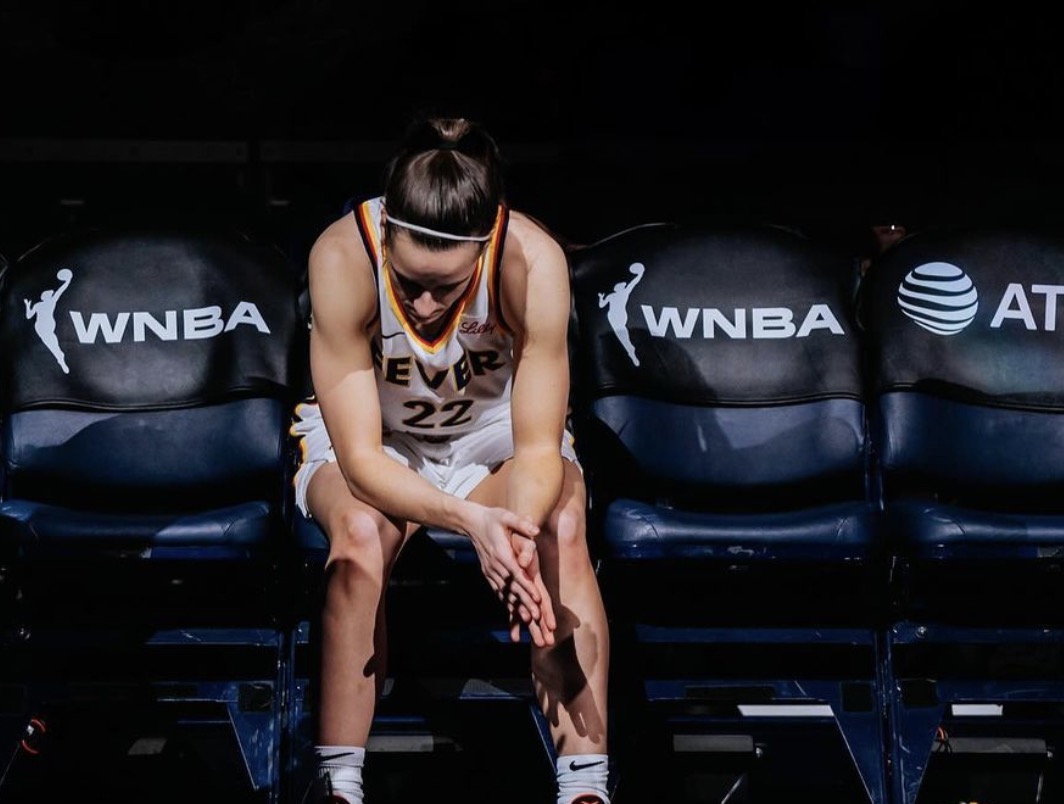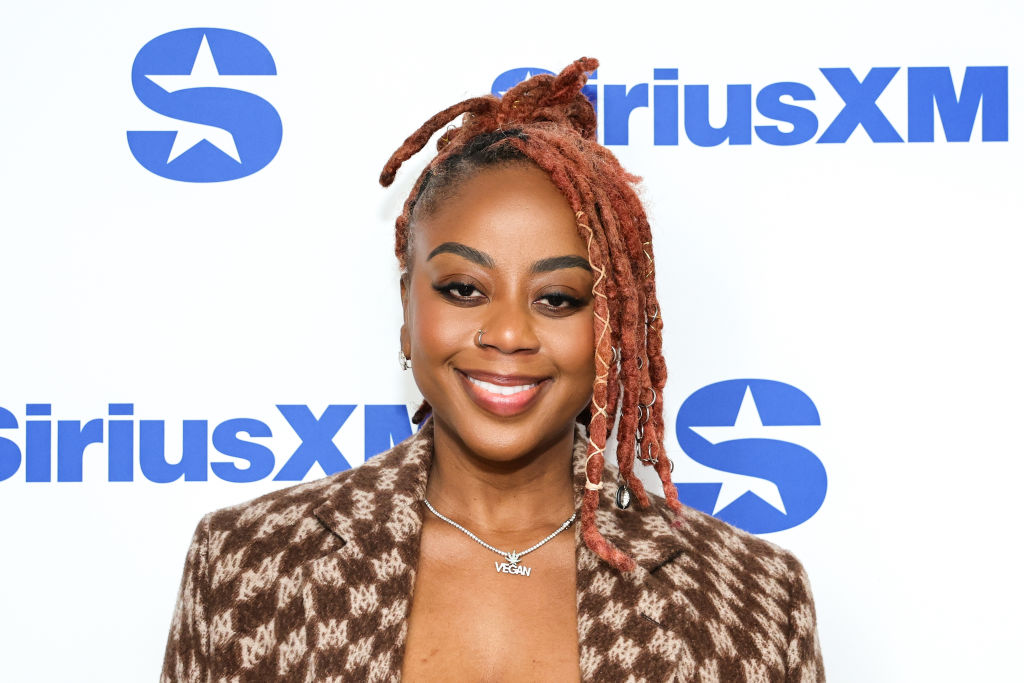Robert Littal’s Deep Dive Into Where All of The WNBA’s Revenue is Going
Robert Littal, the founder of Black Sports Online, ignited a thought-provoking discussion on X about the financial state of the Women’s National Basketball Association (WNBA). His posts, shared under the handle @BSO, highlighted the league’s impressive revenue growth in 2024 while questioning its reported $50 million operating loss, lack of financial transparency, and disparities in […] The post Robert Littal’s Deep Dive Into Where All of The WNBA’s Revenue is Going appeared first on BlackSportsOnline.

Robert Littal, the founder of Black Sports Online, ignited a thought-provoking discussion on X about the financial state of the Women’s National Basketball Association (WNBA). His posts, shared under the handle @BSO, highlighted the league’s impressive revenue growth in 2024 while questioning its reported $50 million operating loss, lack of financial transparency, and disparities in player compensation. The conversation, enriched by replies from other users, offers a nuanced look at whether the WNBA is truly making money and what its financial future holds.
A Surge in Revenue: The 2024 Boom
Littal kicked off the discussion with a striking observation: “CC and others drove up attendance, ticket prices, and sponsorship and merchandise sales by 48% in 2024. So, they almost doubled their revenue from 2023” (X Post). The “CC” reference likely points to Caitlin Clark, a standout WNBA player whose popularity has significantly boosted the league’s visibility. In another post, Littal noted that subscriptions to WNBA League Pass surged by 335% and merchandise sales skyrocketed by 756% from 2023 to 2024 (X Post). These figures paint a picture of a league experiencing a financial renaissance, driven by growing fan engagement and marketability.
This growth is a testament to the WNBA’s increasing cultural relevance. Players like Clark, Angel Reese, and others have drawn larger audiences, boosting ticket sales and merchandise demand. The 335% increase in League Pass subscriptions reflects a shift toward digital consumption, with fans eager to watch games online. The 756% surge in merchandise sales suggests that WNBA branding is resonating with a broader audience, from jerseys to team apparel.
The Paradox of a $50 Million Loss
Despite this revenue boom, Littal highlighted a puzzling contradiction: the WNBA reported a $50 million operating loss in 2024. “The WNBA accountant said they still suffered a $50 million operating loss. Who do you believe?” he asked (X Post). This discrepancy between soaring revenue and a substantial loss sparked skepticism about the league’s financial management.
Littal delved deeper, noting, “They said they lost $50 mil, BUT revenues were up across the board. But they don’t really lay out how they lost the money. It is a real rabbit hole” (X Post). The lack of a clear breakdown of expenses fueled speculation about how the league could be in the red despite nearly doubling its revenue.
Rising Expenses: The Cost of Growth
Replies to Littal’s posts provided insight into the WNBA’s financial challenges. One significant expense is the league’s shift to chartered flights, costing $25 million annually—a sharp increase from the days of commercial travel (X Post). User @mikeflowry pointed out, “Did they double their revenue while expenses remained flat? Doubtful, since it takes money to make money” (X Post). Investments in marketing, higher player salaries, and facility upgrades have likely added to the cost burden.
User @Canedude08 added, “Expenses went up a ton and people forget that some franchises are poorly run and it’s likely they lost money. Everyone isn’t Vegas or the Fever” (X Post). This suggests that while successful teams like the Las Vegas Aces and Indiana Fever (home to Caitlin Clark) may be thriving, other franchises may be struggling, contributing to the overall loss.
Transparency Concerns: A Lack of Clarity
A recurring theme in the conversation was the WNBA’s lack of financial transparency. Littal expressed skepticism about the league’s revenue reporting, stating, “I dont even think they are sure what the actual revenue is” (X Post). This sentiment was echoed by @LoveMyScionFRS, who warned, “If their answers are opaque, there would be repercussions” (X Post).
The absence of a detailed financial breakdown raises questions about accountability. If the league cannot accurately report its revenue, it undermines trust among players, fans, and stakeholders. This opacity could also complicate negotiations for future collective bargaining agreements, as players may demand clearer financial data to secure a fairer share of the revenue.
Revenue Sharing: A Stark Disparity
One of Littal’s most compelling points was the disparity in revenue sharing between the WNBA and the NBA. “They do a form of revenue sharing though. Here is the MASSIVE issue. NBA players get 50% of revenue while WNBA players get 10% and I dont even think they are sure what the actual revenue is,” he wrote (X Post). This comparison highlights a significant inequity: NBA players receive half of the league’s basketball-related income, while WNBA players get only a tenth.
User @DeathbyCeltics clarified that the WNBA does not have true revenue sharing like the NBA. Instead, it has “triggers” that would initiate a 50/50 split if certain revenue growth targets are met, which have not yet been achieved due to the timing of TV deals (X Post). This conditional structure means WNBA players are not currently benefiting proportionally from the league’s growth, despite their role in driving it.
The Role of Investors and Ownership
The conversation also touched on the WNBA’s ownership structure. User @junaid noted, “WNBA only owns 42% of the league and they laid on charter flights.. it ain’t cheap” (X Post). This suggests that a significant portion of the league’s revenue may be distributed to investors and the NBA, which owns a substantial stake. User @taylormarten7A added, “There are a lot of hands in wnba cookie jar—league doesn’t own itself so investors taking their cut” (X Post). This complex ownership model may limit the funds available for player compensation and operational improvements.
Player Initiatives: The Rise of Unrivaled
The financial challenges have not gone unnoticed by WNBA players. User @IndianaFev69829 suggested that the creation of Unrivaled, a new women’s basketball venture, may be a response to these issues: “Probably why the players started Unrivaled. They knew something was off and decided to create an option before they get left without” (X Post). Unrivaled represents a proactive step by players to explore alternative opportunities, potentially offering better financial prospects and control over their careers.
Future Prospects: The 2026 TV Deal and Beyond
Despite the current losses, there is optimism about the WNBA’s financial future. A new TV deal, set to begin in 2026, is expected to be a game-changer. @DeathbyCeltics explained, “They did a massive TV renewal that will make the W profitable on its own, but it doesn’t kick in until 2026. TV is >half of the revenue” (X Post). This deal could significantly boost the league’s revenue, potentially enabling it to achieve profitability and address player compensation concerns.
User @924spatrick offered a broader perspective: “The goal isn’t to make money it’s about investing in capital project that’s why all the teams are getting new facilities… the NBA isn’t asking them to turn a profit yet” (X Post). This suggests that the WNBA is in a strategic investment phase, prioritizing long-term growth over immediate profitability. New practice facilities, upgraded arenas, and enhanced player experiences are part of this vision.
The Bigger Picture: Growth vs. Profitability
The WNBA’s financial situation reflects a delicate balance between growth and profitability. The league is capitalizing on a surge in popularity, driven by star players and increased media exposure. However, heavy investments in infrastructure, travel, and marketing have led to operating losses. The lack of transparency in financial reporting and the low revenue share for players have sparked concerns about fairness and accountability.
Littal’s humorous remark, “There might be some money laundering going on here lol” (X Post), while not a serious accusation, captures the skepticism surrounding the league’s financial figures. User @Its_RianM echoed this sentiment, stating, “I’m absolutely thinking Money laundering because how? Facilities ain’t been upgraded. They use Southwest to fly” (X Post). While the WNBA has indeed upgraded to chartered flights, the perception of mismanagement persists among some fans.
Conclusion
Robert Littal’s X posts on April 14, 2025, offer a compelling snapshot of the WNBA’s financial landscape. The league is experiencing unprecedented revenue growth, driven by a 48% increase in attendance, ticket prices, sponsorships, and merchandise sales, as well as massive gains in League Pass subscriptions and merchandise. However, a $50 million operating loss, driven by increased expenses like $25 million for chartered flights, raises questions about financial management.
The disparity in revenue sharing—10% for WNBA players compared to 50% for NBA players—highlights a significant inequity, compounded by concerns about financial transparency. While the league is investing heavily in growth, with a promising TV deal set for 2026, addressing these issues will be crucial for maintaining trust and ensuring long-term success.
The conversation sparked by Littal underscores the WNBA’s potential and its challenges. As the league navigates this pivotal moment, balancing investment with accountability and fairness will determine whether it can translate its growing popularity into sustainable profitability.
The post Robert Littal’s Deep Dive Into Where All of The WNBA’s Revenue is Going appeared first on BlackSportsOnline.

 UnmutedSports
UnmutedSports 







![Extended Trailer: ‘Building The Band’ [Starring Nicole Scherzinger, Kelly Rowland & Liam Payne]](https://150893825.v2.pressablecdn.com/wp-content/uploads/2025/06/building-the-band-netflix-kelly-rowland-liam-payne-tgj-scaled.jpg)



